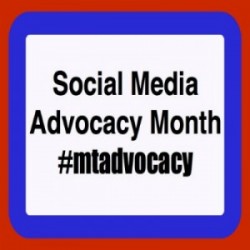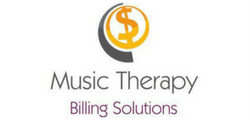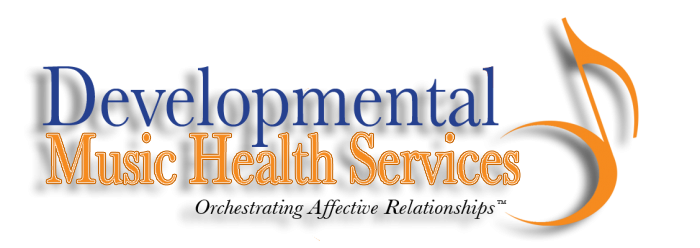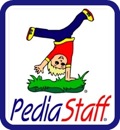January marks one of my favorite months of the year—the annual Music Therapy Social Media Advocacy project! The 2015 project marks a particularly special event. Not only are we celebrating this being the 5th annual Social Media Advocacy month, but it coincides with the much-anticipated launch of the Scope of Music Therapy Practice (2015) document jointly created and approved by AMTA and CBMT.
But more about the scope of practice later (and why this is such a big deal). For now, let’s take a stroll down memory lane and see how the Social Media Advocacy month project has evolved over the years.
2011
The first Social Media Advocacy project was launched in January 2011. The purpose of this project was to “saturate the visibility of advocacy in the music therapy social media streams during the month of January.” Judy Simpson, AMTA’s Director of Government Relations, and Dena Register, CBMT’s Regulatory Affairs Advisor, each composed a guest blog post that bloggers had the option to share. Twenty music therapy bloggers and podcasters joined us that year.
2012
The 2012 Social Media Advocacy project was very similar to the first event, but with three key changes: (a) we started sharing project-related posts on a centralized page (now housed here),(b) we launched the #mtadvocacy hashtag, and (c) bloggers were encouraged to share a Cosmo-style “What is Your Advocacy Personality?” quiz with their readers.
Q: You are just settling in to your seat for a 2-hour flight when the person next to you asks, “What do you do?” After you respond, the questions begin. You think:
-
“I don’t mind sharing, but I want to listen to the CD I downloaded before this flight. Let’s wrap it up.”
-
“So far, so good. I hope I can answer all their questions.”
-
“Bring on the questions. I love these opportunities to educate!”
-
“I wish I’d said I was a dental hygienist.”
Tally up your points on this 10-question quiz and find out if you are loud and proud, not afraid to take the lead, a behind-the-scenes sleuth, or prefer to take a more supporting role.
40 music therapy bloggers and podcasters participated in the project in 2012.
2013
The 2013 project was a little different in that we incorporated a theme for the first time. It was based on the idea of connection, in particular on the importance of story-telling in the advocacy process and on connecting with music therapy stories as told through different voices (e.g. music therapists, clients, family members, colleagues, etc.). Bloggers and podcasters were challenged to collect stories throughout the month—guest blog posts, blog comments, Twitter and Facebook updates—and invite their audience to share their music therapy stories. We used the #lovemusictherapy hashtag, in addition to the #mtadvocacy hashtag, for project-related updates.
48 music therapy bloggers and podcasters participated in the project in 2013.
2014
The 2014 Social Media Advocacy Month theme was inspired by challenges we had been facing as a result of state recognition efforts. The theme was “We are…” and it centered on exploring and honoring the profession of music therapy as a distinct profession, unique from other professions and professionals with which we work. As with the first social media advocacy month, Judy Simpson, AMTA’s Director of Government Relations, and Dena Register, CBMT’s Regulatory Affairs, each wrote a guest post on the topic that bloggers were invited to share with their audience.
46 music therapy bloggers and podcasters participated in the project in 2014.
2015
This year’s theme (re: VISION) is again directly inspired by recent events, in particular this month’s release of the Scope of Music Therapy Practice (2015).
re: VISION can have many meanings. In the case of state recognition efforts, it involves converting the challenges we face from increased opposition—a natural consequence of the increased visibility recognition efforts have generated—to opportunities to examine the profession in a new light. With advocacy efforts in general, it can mean taking something that is initially seen as a threat and reframing the conversation by turning it into an opportunity to educate one more person or group about music therapy. It is about how we Value this endeavor, we Imagine Success in our advocacy efforts, we Invest in advocacy Opportunities Now and whenever possible.
You can catch up on social media advocacy-related posts on this website: http://musictherapystaterecognition.blogspot.com/ and follow project-related updates through the #mtadvocacy hashtag.
Next week I’ll write about what a scope of practice actually IS and why this new document is so important. Until then, here is some information from AMTA and CBMT:
As the profession of music therapy has been moving forward with recognition at the state level it has been identified that a document was needed to reflect a similar format to other health care professional organizations Scopes of Practice. CBMT and AMTA worked together to create a Scope of Music Therapy Practice (2015) for the profession based on published documents from both organizations. This new document entitled Scope of Music Therapy Practice (2015) is available as an educational tool and legislative support document that broadly defines the range of responsibilities of a fully qualified music therapy professional with requisite education, clinical training, and board certification.



 orcid.org/0000-0001-8665-1493
orcid.org/0000-0001-8665-1493






{ 0 comments… add one now }
You must log in to post a comment.